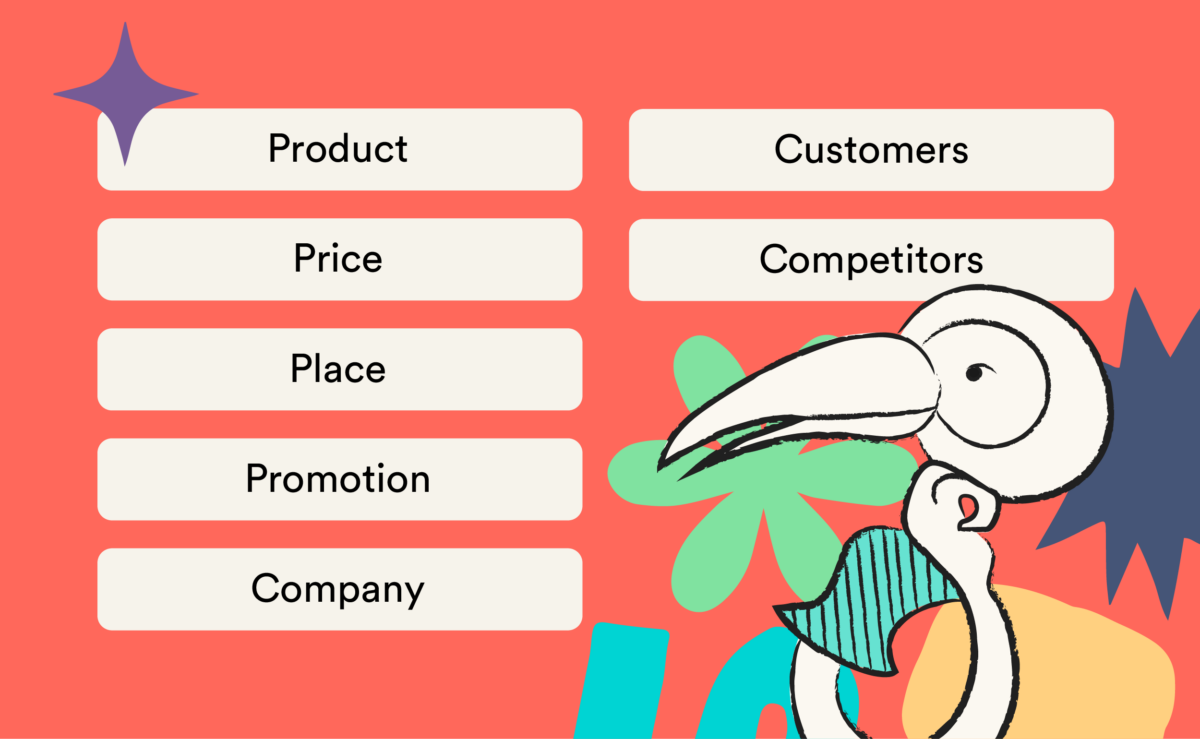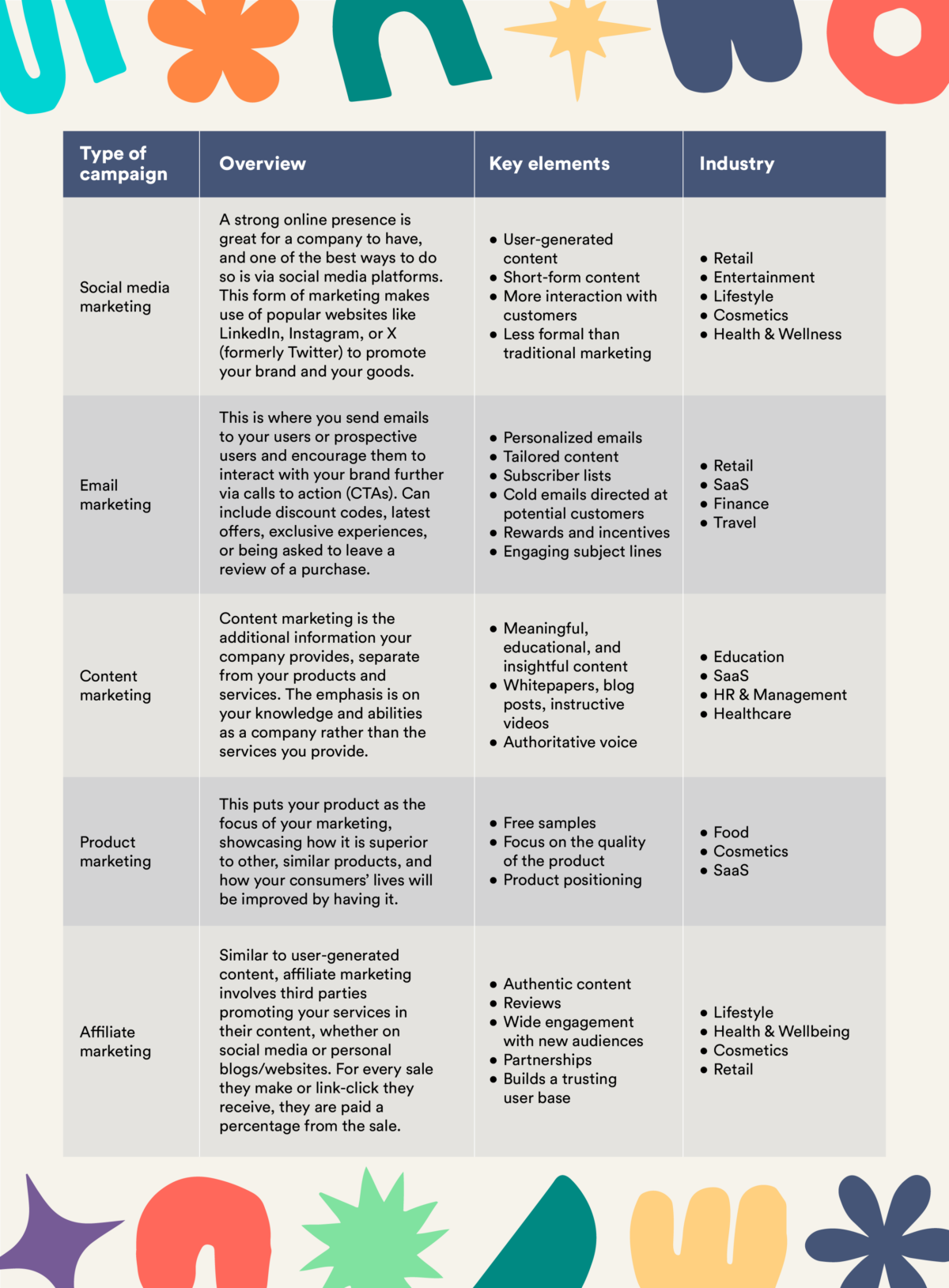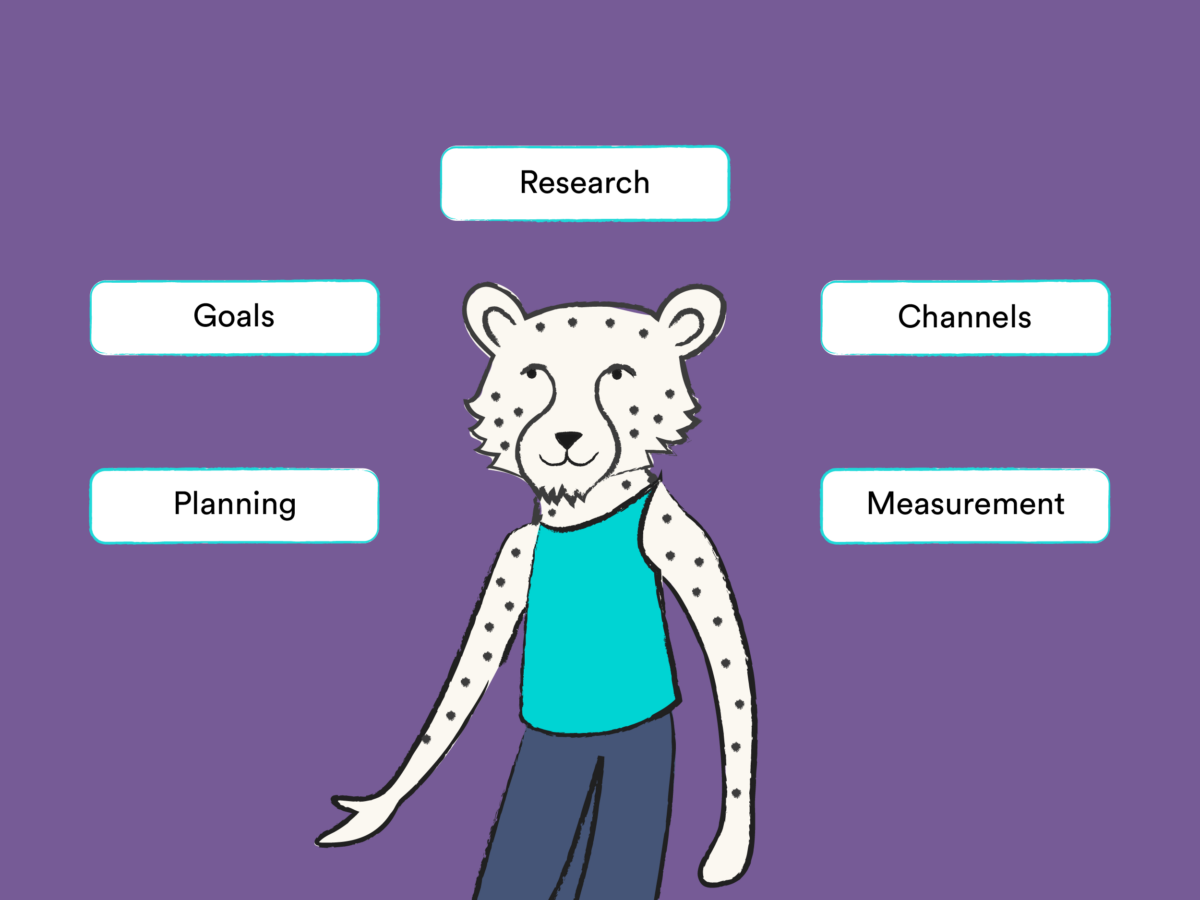A solid strategic marketing campaign is the lynchpin to a business’s success. It provides you with a sense of direction, a long-term plan, and a deep insight into the needs and performance of your company.
It’s a chance for you to really focus on where you want your business to go. Unfortunately, it’s not the easiest thing to put together. There are a lot of factors to consider, such as how you’re going to communicate this campaign, what you want the end goal to be, and affordable ways to maximize your efforts.
To help get you started, we’ve created a complete guide on how to set up a campaign strategy that’s sure to get results. We’ll look at what it’s all about, the steps you need to take, and campaigns you might want to invest in the most, depending on your industry.
What is strategic marketing?
Strategic marketing is all about boosting your campaign to be the best it can be. This is done through extensive research and an introspective analysis of your business. This lets you assess both internal and external factors which could affect the efficiency of your marketing.
You don’t want your time and resources going to waste. Strategic planning will ensure that your money and energy are correctly allocated to the areas that will get the best results.
When it comes to marketing, there are several things to keep in mind, known as the “4 Ps” and the “3 Cs”. Once you understand these concepts, you’ll be able to use them as templates to base your strategy around. This will ensure all of their needs are met, and no marketing element is neglected.
Let’s take a look.

The 4 ‘P’s of marketing
The 4 Ps stand for:
- Product: This looks at the product you are offering and helps you make decisions based on its features, design, and quality. Whenever you develop a new product, you need to understand its appeal to customers – what aspects will incentivize people to buy it?
- Price: In a competitive market, determining pricing strategies is a great way to boost you above others. You should consider your costs and those of the businesses around you, as well as customer perceptions – will their personal return on investment (ROI) be worth buying your product?
- Place: Brand awareness looks at how many people know about your business and its products. Identifying the best distribution channels and locations to engage with your potential customers will boost your outreach and appeal to as many buyers as possible. Think about untapped or niche corners of the market – what can you do to make your services available to the customers overlooked there?
- Promotion: The promotional side of your business is about creating marketing campaigns and effective strategies to carry you forward. It deals with how you display services to the world and how you interact and reach target audiences as a result.
The 3 ‘C’s of marketing
The 3 Cs work with the 4 Ps to create a well-rounded picture of your business and overall marketing efforts. They stand for:
- Company: This is where the introspective analysis mentioned earlier comes into play. You need to understand your business’s strengths, weaknesses, resources, and capabilities to know how to best prioritize them. Once you know how everything works most efficiently, you can start to mitigate any weaknesses and boost the strengths in your strategic campaigns.
- Customers: It’s easy to think of customers as a single entity rather than thousands of individuals. You need to understand the needs, preferences, behaviors, and characteristics of your target audience to attract them. Creating a buyer persona will help, as you can section groups of your potential customers by their demographics and specific requirements.
- Competitors: Before launching anything, you need to analyze and understand the market and its competitive landscape. This includes identifying your competitor’s strengths and weaknesses before measuring them against your own. Once you thoroughly understand what you’re up against, you can position yourself and your product accordingly.
Types of marketing campaigns
As a general rule, marketing campaigns are broken down into two sections: digital marketing and physical marketing.
As the names suggest, digital marketing refers to any advertising, promotion, or interaction with customers that is conducted online. Vice versa, physical marketing involves campaigns done in-store or in-person, including:
- Advertisements on billboards
- Posters on public transport
- Pop-up shops
- Discounts only redeemable in-store
- Real-world events

Steps to achieving a successful campaign
Campaign planning is relatively straightforward; you just need to know how to break the process down into easy-to-manage steps. It’s worth noting that these steps aren’t set in stone – you don’t have to stick to this structure rigidly. But make sure you have a plethora of knowledge you can draw on first and foremost to make informed decisions.
1. Do your research
Conducting thorough market research is the key to building the foundation to your campaign. During this time, assess the state of the market you will be entering into, analyzing:
- Market trends
- Consumer needs
- Products your competitors offer
- Frequently asked questions (FAQs) from customers
- Gaps or opportunities for yourself
Research is an essential part of any marketing strategy, so it’s vital that you gather as much information as possible. This will give you very valuable insight which you can use to influence your decisions going forward.

For example, if you decide to improve your social media strategy, you need to know what the most effective techniques are for engaging with that type of audience. When researching the demographics of people on social media, you may find that they tend to be:
- Younger
- More conscious of environmental issues such as climate change
- Harder to keep engaged over long periods
- More interested in brands that promote diversity and inclusion
With this information, you can tweak your strategy to tick every box..
Similarly, if you have a global audience, research the advertising techniques or jargon that’s popular in those parts of the world.
Even in English-speaking countries, there are differences in the language, slang, and spelling. For example, in Australia, flip-flops are known as thongs. That’s sure to draw some amused looks if used in the wrong circumstances.
2. Understand your campaign goals
When it comes to strategic planning, you need an actionable sense of direction which will lead to a worthwhile outcome. To do this, you need to understand what you want your goals to be. This will give you a clear pipeline from point A to point B, allowing you to invest your energy correctly.
Goals vary depending on your business’s needs and wants, but examples include:
- Increased revenue
- Increased brand awareness and recognition
- Recognition in your industry as a thought leader
- Fundraising for a charitable cause
- Greater environmental sustainability
- Growth and expansion across the globe
Every new campaign will bring with it a new set of goals. With your marketing team, sit down and analyze them to assess how realistic they are.
Remember, campaigns can last for many years, so you can have long-term goals working alongside short-term ones. Market growth is a marathon, not a sprint, so keep your targets attainable and sustainable to your rate of progression. Just like people, companies can burn out when pushed too hard. Steady growth allows for better expansion and allocation of resources over time.
Once you’ve got your goals down on paper, you can start developing a plan to achieve them.
3. Plan meticulously
It goes without saying that you can’t just rush into business decisions. You need to be careful and considerate with the choices you make. In other words, you have to be strategic.
Here are some points you need to consider when it comes to your planning:
- Resource allocation: What resources do you need, including manpower, technology, and manufacturing, to effectively optimize your campaign’s performance? How much is it all going to cost?
- Timeline: What sort of timeline are you looking at? What milestones will you set to ensure you maintain consistent growth?
- Risk management: Are there any risks associated with your strategy? What are the areas for fault or potential pain points, and how can you address them?
- Adaptability: How flexible is your approach? Are you able to alter your strategy if circumstances change?
- Message consistency: Are you making sure your message is consistent across all channels of communication?
- Target audience: Is your audience liable to change or become disinterested in your product? What might cause them to pull away, and how could you tackle that?
Planning allows you to create a roadmap that you can follow along, ticking off achievements as you go. It will make the development of your campaign far more effective since you’ll have a framework and goals to base it on.

4. Choose your communication channels carefully
Once you know who your audience is and the content you want to show them, you need to think about which medium works best to get that message across.
Your communication channels can be anything from social media, to blogs, to physical marketing techniques such as handing out free samples or trials in stores. Whatever method you choose, it needs to attract as wide of an audience as possible.
As previously mentioned, your message should be consistent throughout every communication channel. Calendars, social media schedulers, and a dedicated marketing team can help make this happen.
While it may seem obvious, an inconsistent message can cause a lot of confusion with your audience, making you seem disorganized and untrustworthy. It goes without saying that this is unappealing for any potential investors.
Depending on the tone and values of your company, you may want to focus your efforts on one means of communication over another. The table shown earlier can help demonstrate where you’ll see the best engagement depending on your industry, and how formal you want your business structure to be.
5. Measure your metrics
Once everything is in place and you have launched your campaign, keeping track of it to ensure it runs smoothly is next on the list.
By keeping a close eye on your metrics, you can make important decisions to keep your campaign strong. It’s not a failure if you have to change things – it’s strategy, which is what we’re all about at Literal Humans.
If one thing doesn’t work, try something else. Your strategy is an ever-evolving concept requiring flexibility and adaptability to generate the best success. Here are a few key performance indicators (KPIs) to measure and keep in mind:
- Return on investment: Your ROI looks at the profitability of your choices. A high ROI indicates a profitable investment, as it means the money you get back is more than the amount you initially put in. In a marketing campaign, your ROI could look at anything, from the benefits of individual adverts to the entire campaign.
- Click-through rate (CTR): CTR is used for digital marketing and is the percentage of users who click on a specific link, advertisement, or CTA within a web page, email, or other online content.
- Churn rate: Unfortunately, every business is liable to losing customers. Your churn rate is how quickly your customers stop using a service, cancel a subscription, or leave a company during a specific time period. Your churn rate should be as low as possible, but don’t focus purely on keeping existing customers to the point where you neglect to bring in new ones.
- Bounce rate: Another purely digital marketing metric, bounce rate looks at the percentage of visitors who leave a website after viewing only one page without engaging with it further. High bounce rates are bad, as it means your content isn’t interesting to your website visitors. A great way to avoid this is to ensure your landing pages are top notch, with direct CTAs that invite users to explore the page further.
- Customer feedback: One of the most valuable resources you can tap into is direct feedback from your customers. You can find this on review websites or company surveys distributed on your social media, emails, or in store. It provides a goldmine of qualitative data to be analyzed and put into action later on.
Ready to get strategizing?
As daunting as it may sound, orchestrating a strategic campaign isn’t too difficult. You just need to have a clear idea of what you want to gain from your efforts, and ensure your plans are realistic and actionable. This will make sure no resources are wasted following leads that will ultimately bring you very little in return.
Bringing on additional help can be very beneficial, especially as your marketing campaign advances and grows. It can also be worth hiring part-time strategist professionals to lead you through the most effective way to plan a campaign.
Whatever method you choose, we hope this has provided you with some answers to get you started!









